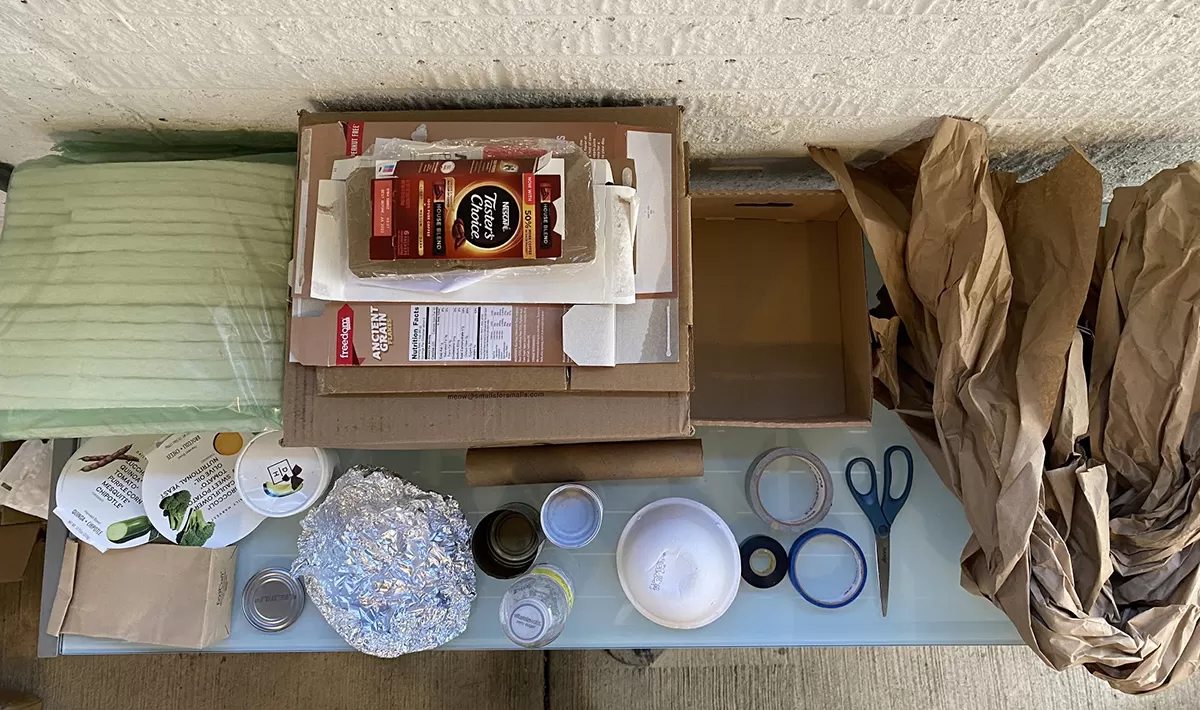
Search
Bio-inspired Design: Discover the Animal Adaptations That Can Change the World
Introduction
There is a lot we can learn from looking closely at the amazing adaptations animals have that help them to better survive in a variety of environments including on land, in air, and in water. Exploring animal adaptations is a fantastic way to connect with the natural world while practicing scientific thinking and science skills. One way to do this is to become Engineers-In-Training with us! In this lesson your students will become Engineers, or, people who design, or plan, and build complex machines, systems, or structures. But not just any normal engineers! Engineers who use something called: Bio-inspired Design. This is when engineers investigate the animals and plants of the world and look closely at their adaptations to come up with technology that solves human problems ranging from helping sick or injured people, saving lives during environmental disasters, or making people's lives safer and easier.
In this activity, Engineers-In-Training will research, or carefully study and investigate, various animals’ traits, or adaptations, then use found objects at home to create a piece of bio-inspired technology that solves a human problem inspired by those animal adaptations.
The beauty of this activity lies in its flexibility! It can be done in the classroom as a whole-group activity, but can also be assigned to be done at home with little adult help needed. Students will just need an adult to provide materials that would have gone into the recycling bin or in the trash… and maybe a little bit of help bringing their vision to life!
Activity at a Glance for Teachers and Caregivers
Learning Goals
- Better understand that different animals use their body parts in different ways to see, hear, grasp objects, protect themselves, move from place to place, and seek, find, and take in food, water, and air (NGSS LS1.A)
- Apply knowledge of the natural world by using materials to design a solution to a human problem (NGSS 1-LS1-1)
- Cultivate science skills, such as making observations and creative problem solving
- Develop awareness and interest in new science careers
Time & Resources
60-90 minutes
The length of time it takes to complete the investigation and the supplies you need are very adaptable depending on interest, time, age, and availability of household items. The investigation can be done all at once, or spread out over a couple of days. Below are recommended times and supplies for each step.
Step 1: Learn about animal adaptations
Engineers-In-Training can watch this video highlighting some amazing animal adaptations and how the adaptation helps the animal to be better able to survive in their environment.
Time: 5-10 minutes
Supplies:
- Computer, tablet, phone or other device to watch video
- Optional: Piece of paper and pencil to record observations
Step 2: Learn about how engineers use bio-inspired design
Watch this short video that explains how engineers use bio-inspired design to solve human problems all around the world. Make sure you’ve already watched our video about animal adaptations here to learn about how adaptations help animals to better survive in their environment and to better understand why engineers would want to study them. Engineers-In-Training can record what they see by drawing pictures of some of the bio-technology showcased in this video.
Time: 5-10 minutes
Supplies:
- Computer, tablet, phone or other device to watch video
- Optional: Piece of paper and pencil to record observations
Step 3: Plan your own bio-inspired technology

Now it’s time to become engineers and think about some of the animal adaptations showcased throughout the videos or even favorite animal adaptations. Engineers-In-Training will choose an adaptation to mimic by creating their bio-technology, ranging anywhere from an elephant trunk to frog eyes. Students can draw, write about, or explain verbally why they’ve chosen a certain adaptation and how they think it could help solve a problem.
Time: 10-30 minutes
Supplies:
- Blueprint Design (or piece of paper) and pencil
- Optional: Show Engineers-In-Training available materials so they know what options are available to develop their plan (materials can be found objects from trash/recycling, like paper towel tubes, cardboard boxes, cans, cereal boxes, shipping materials, food containers, and more).
Step 4: Build your bio-inspired technology

Now it’s time to get to work! With the plan they’ve created, Engineers-In-Training will assemble and finalize their bio-inspired technology.
Time: 30-60 minutes
Supplies:
- Found objects from trash/recycling, like paper towel tubes, cardboard boxes, cans, cereal boxes, shipping materials, food containers, and more
- Tools to cut, tape, glue, color, and assemble the bio-inspired technology
Step 5: Tell the world about your bio-inspired technology

Now that Engineers-In-Training have created a piece of technology using bio-inspired design, it’s time to tell the scientific world all about the technology and how it can help the human world- does it help solve a problem? Does it make someone safer? Does it help someone who is sick? Does it make something easier to do? Adults can have a discussion about this with their students in a whole or small group and/or have them fill out a mock newspaper article explaining their technology.
Time: 10 - 30 minutes
Supplies:
- Optional: Engineer-In-Training Gazette and a pencil
Step 6: Take a photo or video of your bio-inspired technology

Now Engineers-In-Training can document their bio-inspired technology to share with the world. Take a photo of your technology! Send it to NMNHschoolprograms@si.edu to be posted on our website to inspire other Engineers-In-Training just like you!
Time: 5-10 minutes
Supplies:
- Camera, computer, phone or other device with photo capability
Resource Type
Hands-On Activities
Grade Level
K-2
Learning Standards
Next Generation Science Standards
Topics
Life Science